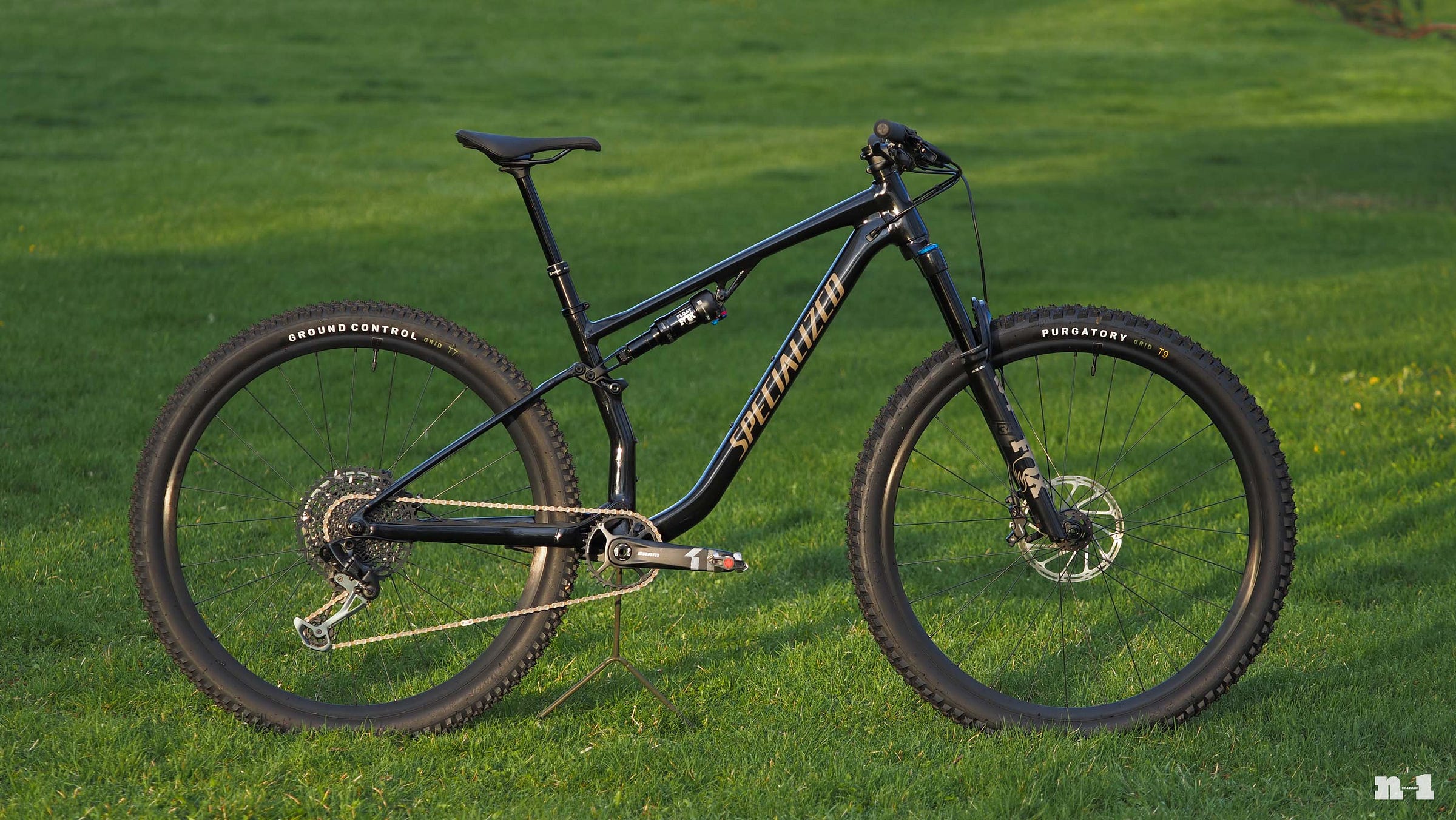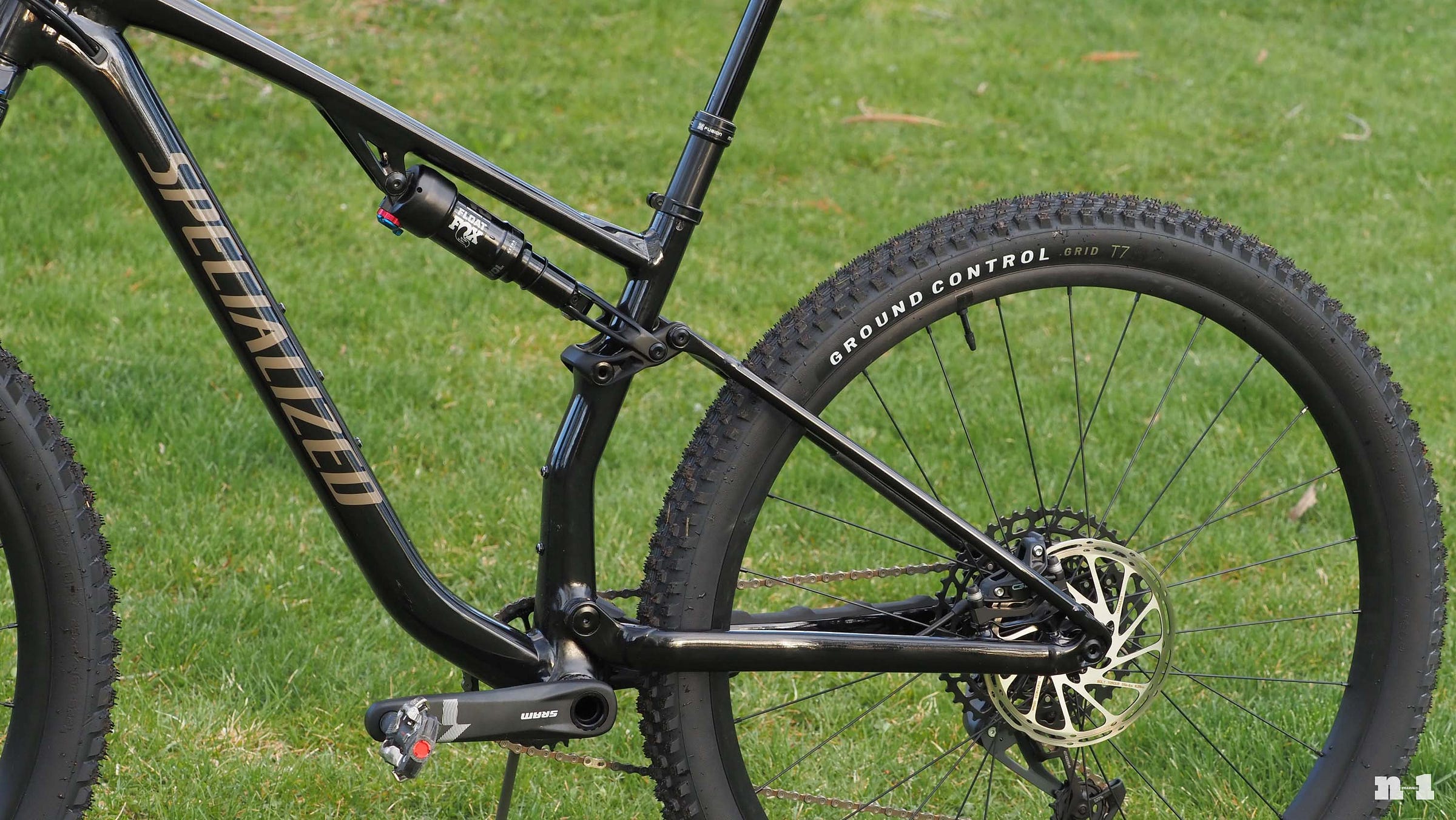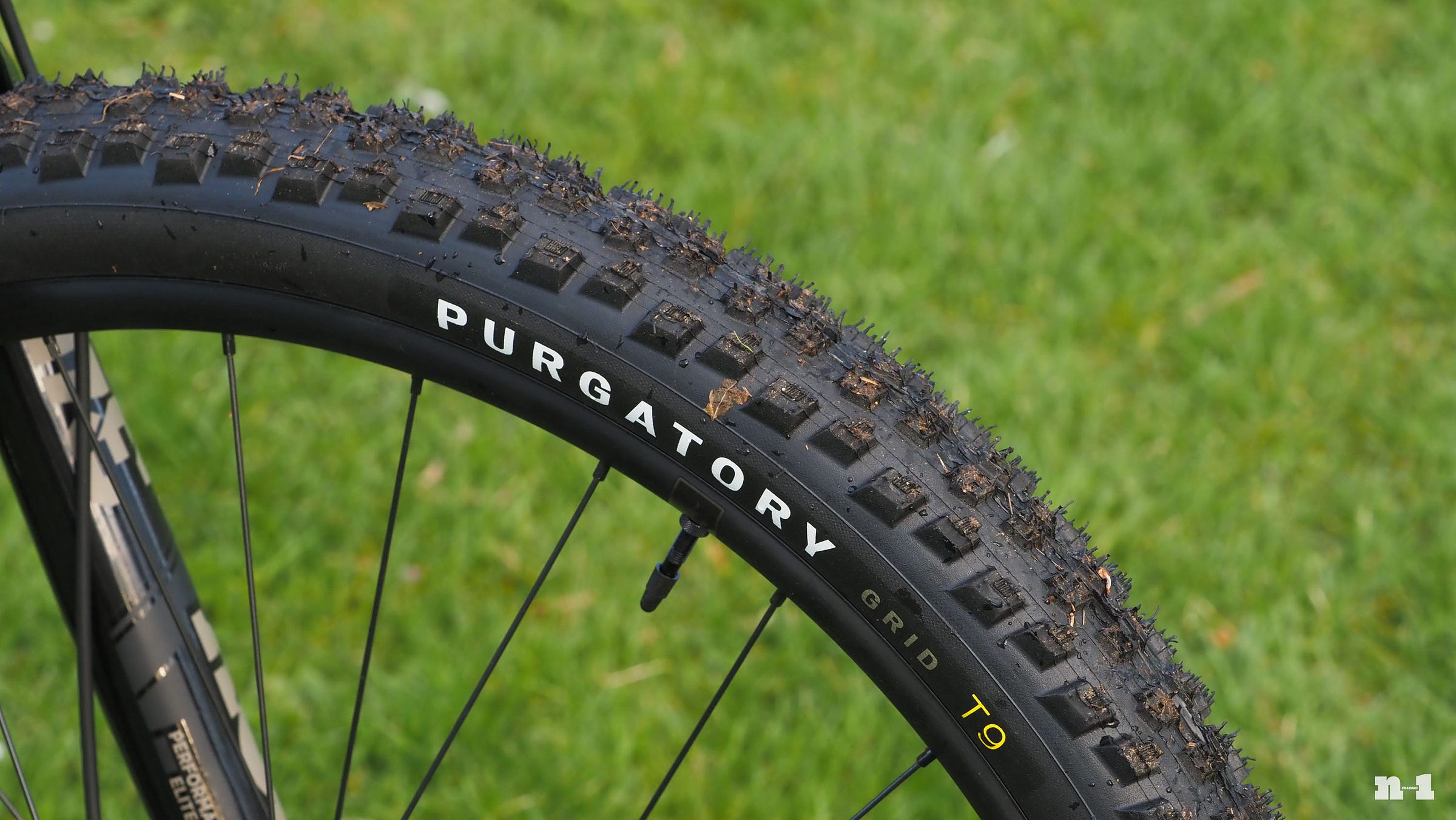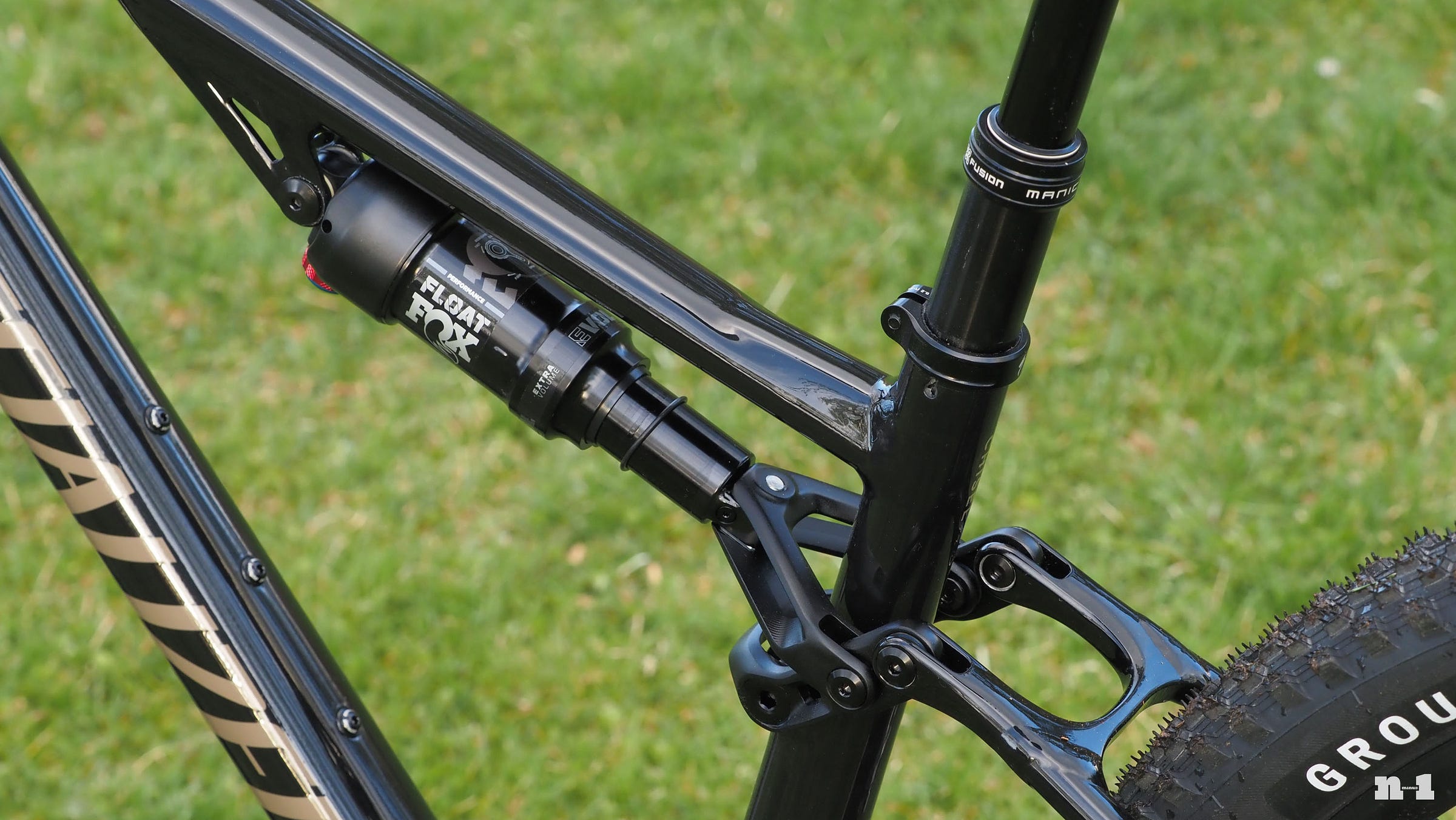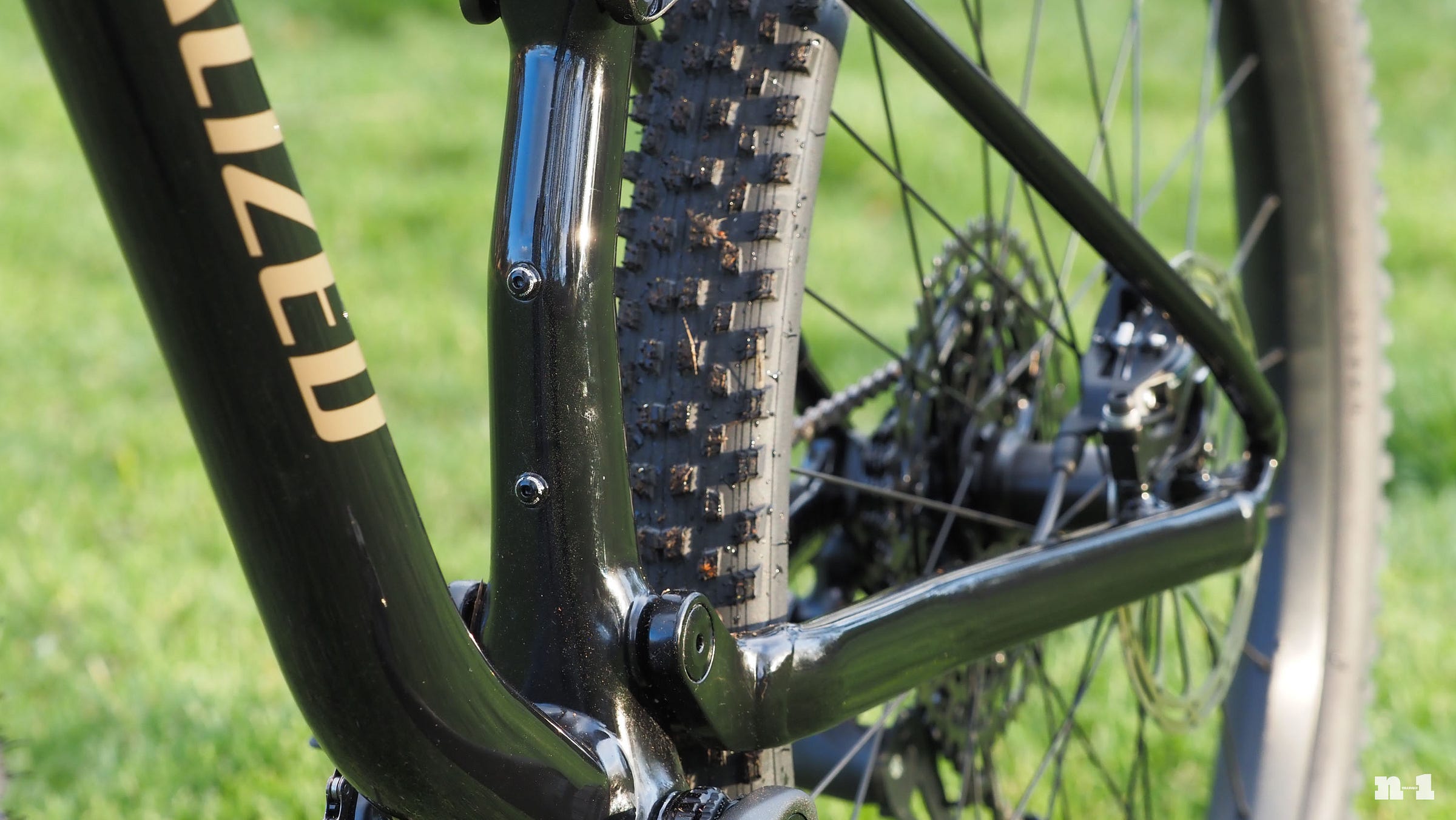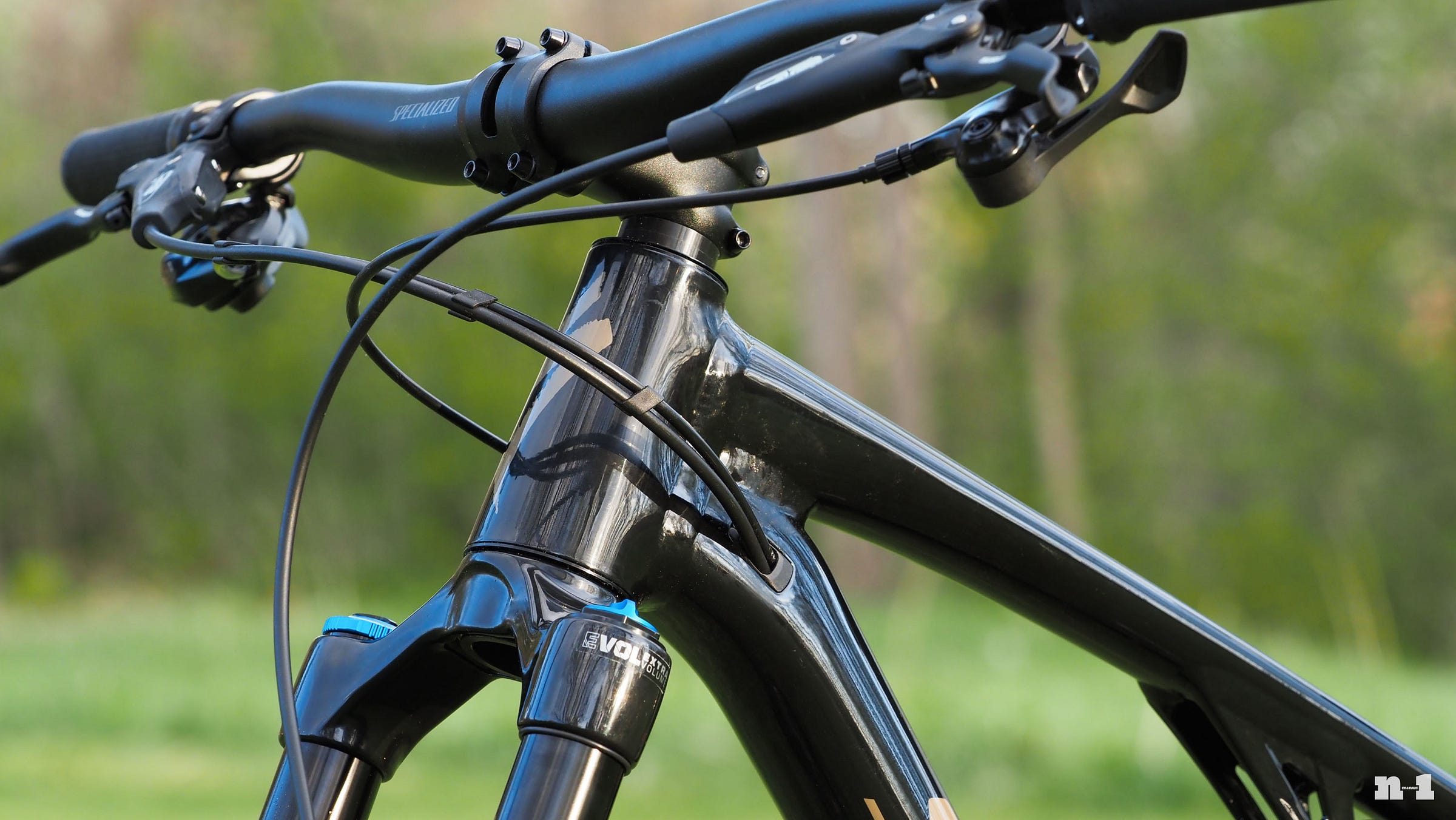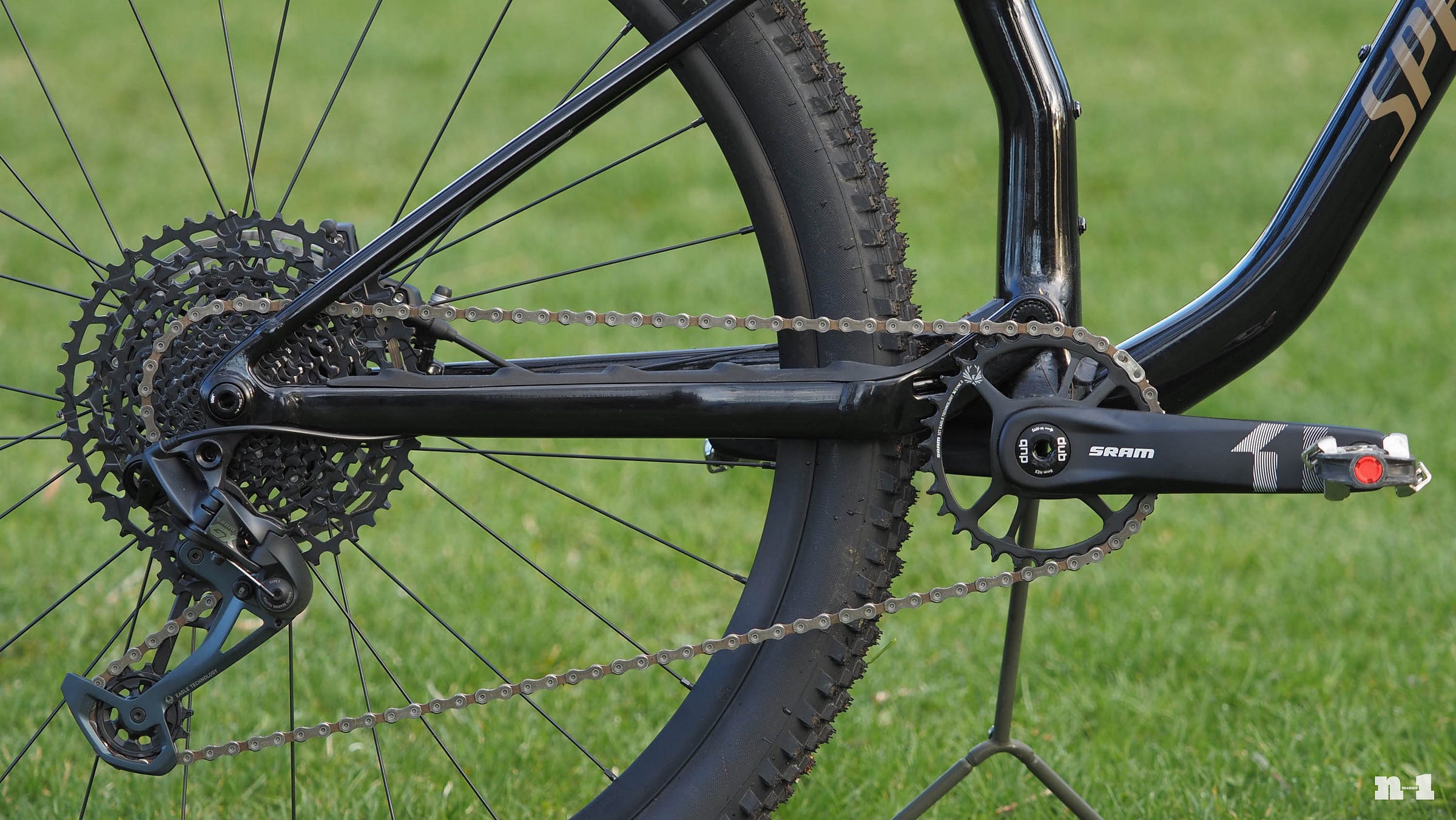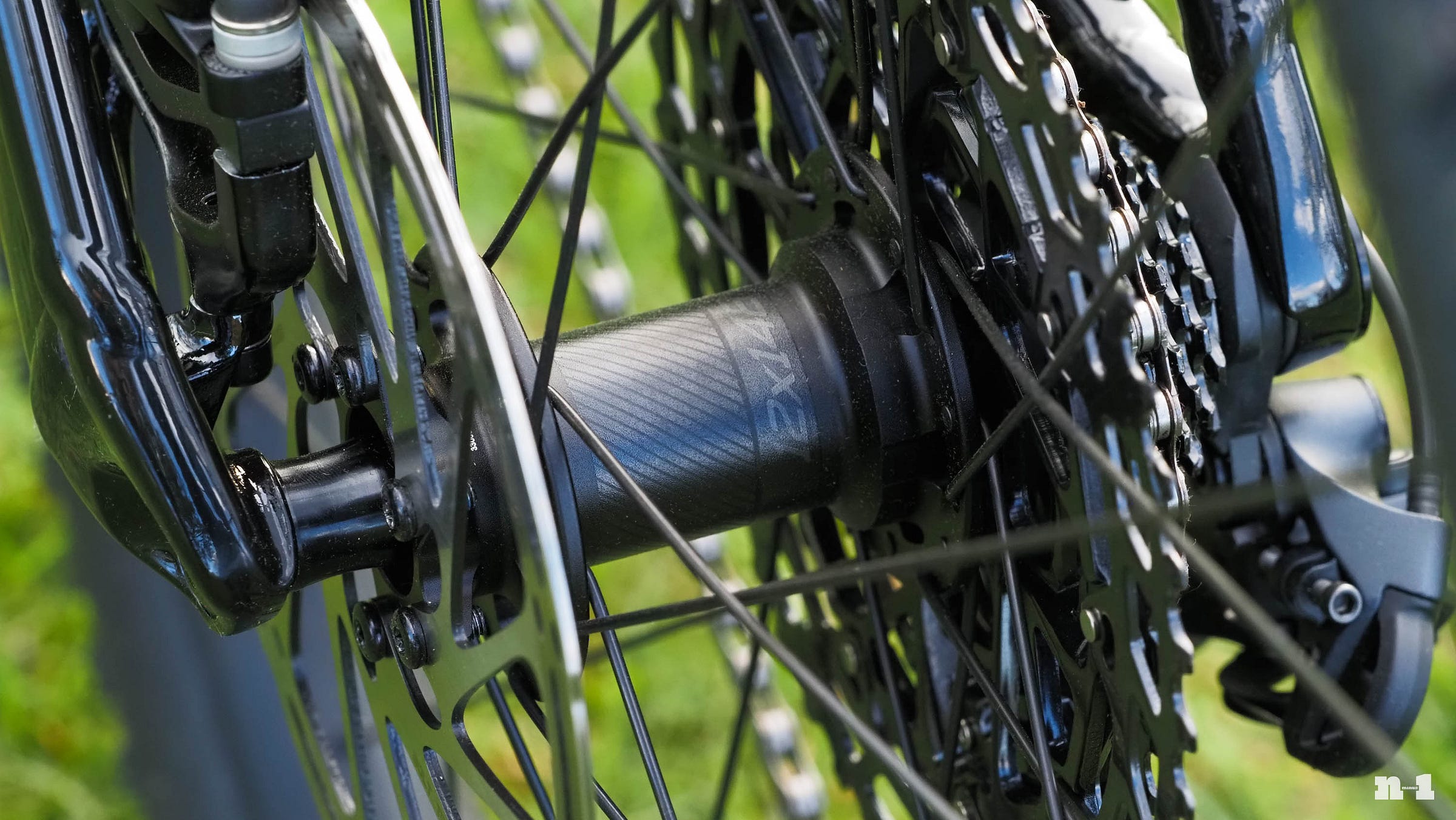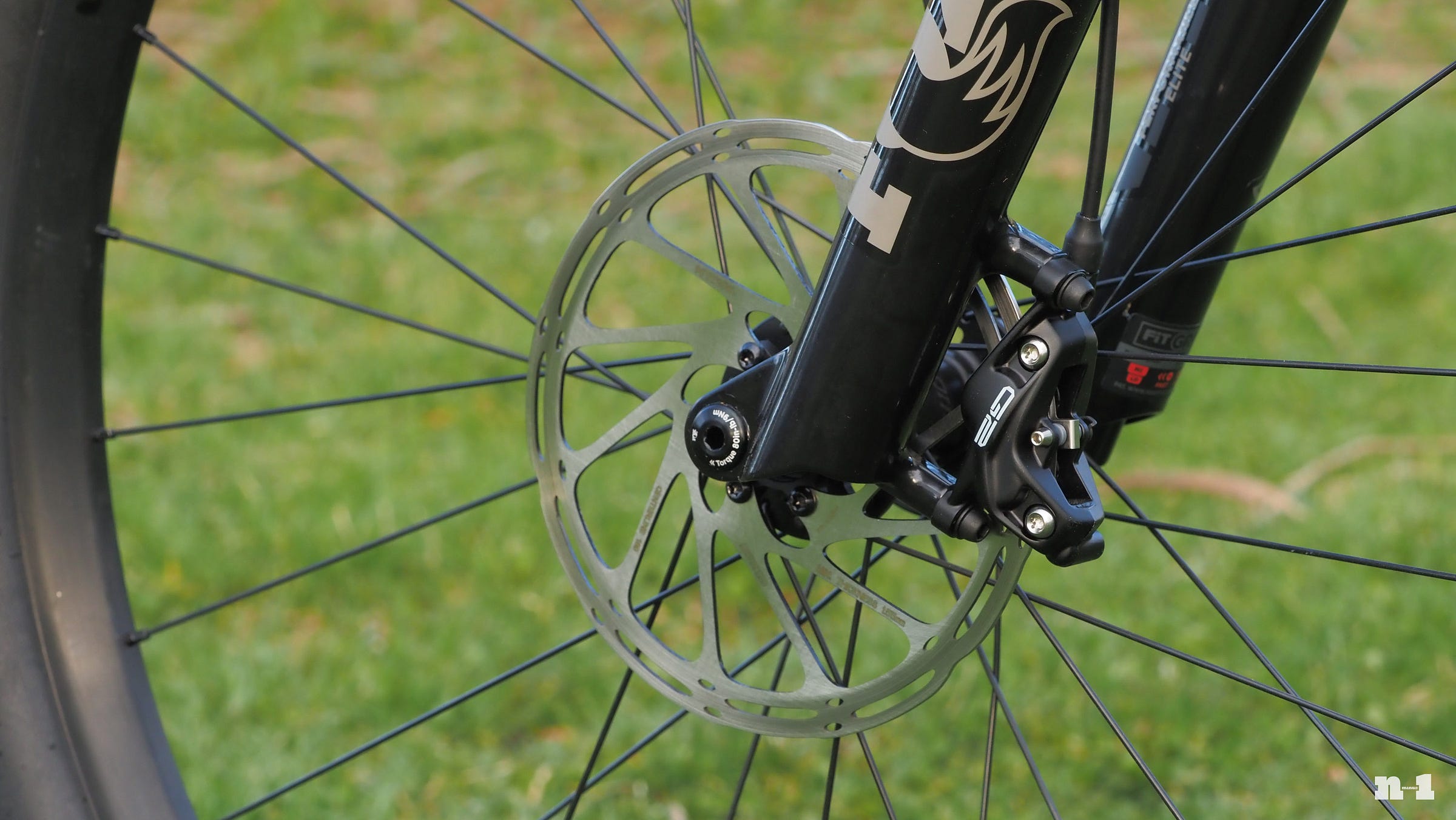Specialized Chisel Comp Evo mountain bike review: The aluminum sleeper
Fast and efficient, impressively capable, generally well-specced, and reasonably priced
Been lusting after a Specialized Epic 8 Evo? You’re certainly not alone as it’s been one of the brand’s hottest short-travel cross-country bikes in recent memory. It’s fast, light, and efficient, and it punches well above its weight class thanks to excellent frame geometry and suspension performance. Unfortunately, it’s also not exactly inexpensive, with even the entry-level model still commanding a retail price of US$4,500 / £4,500 / €5,500 / AU$7,500.
Thankfully, Specialized recently – and quietly, I might add – rolled out a more affordable option in the aluminum Chisel Comp Evo, and it’s a convincing facsimile of its carbon fiber cousin. It’s a bit heavier and the rear wheel travel is slightly lower at 110 instead of 120 mm, but most of the other positive attributes of its fancier cousin carry over. Most importantly, it’s still a remarkably fast and fun bike to ride, and it’s a lot more attainable at US$3,600 / £3,000 / €3,600 / AU$5,800.
Pros: Pedaling efficiency, handling, good parts spec, solid value, fits two large bottles
Cons: Heavy stock wheelset, 10 mm less travel than the Epic 8 Evo
The takeaway: The little bike that could.
Chiseling out a Chisel
The Chisel Comp Evo bears a strong visual resemblance to the Epic 8 Evo with similarly low-slung profiles, the same kinked seat tube design, and featuring the same single-pivot flexstay rear suspension architecture. If you don’t look too closely, the Chisel Comp Evo’s sculpted frame might even fool onlookers into thinking it’s made of carbon fiber instead of metal, particularly with its monochrome gloss black paint and relatively smooth welds.
Much of that visual kinship is due to how the frame is manufactured.
Nearly all higher-end aluminum frames these days feature something called hydroforming, where pressurized fluid is used to push the tube walls outward against a steel mold. This allows for much more complex shaping than what you get from extruding, but Specialized goes further still, using the technology to create entire subassemblies in one step that typically require multiple parts. For example, common practice for an aluminum full-suspension bike is to form the seat tube, swingarm pivot housing, and bottom bracket shell as three separate pieces, and then weld them all together.
In contrast, these are mostly all formed as a single piece on the Chisel (ignoring some smaller inserts), which not only cuts down on complexity, but also saves weight.
Also contributing is Specialized’s trademark Smartweld technology, which is exemplified up at the front of the frame. Typically, an aluminum head tube is formed as a nominal cylinder and then welded to the mitered ends of the top tube and down tube. But the Chisel instead incorporates part of the adjoining tubes directly into the head tube, with curled-in ends that mate to similarly curled-in ends on the top tube and down tube – no additional mitering required. The curled-in ends also form natural valleys for the weld beads, which Specialized says not only speeds up the production process, but also supposedly boosts joint strength.
The Chisel’s frame construction is otherwise pretty conventional. Forgings are used for the seatstay yoke, UDH-compatible dropouts, and upper shock link, the partially external control line routing thankfully does not feed anything through the headset, the 73 mm-wide bottom bracket shell uses standard English threading for the bearing cups, and up top is a refreshingly normal external aluminum seatpost collar.
Suspension-wise, Specialized is using what’s basically become the industry-standard layout for short-travel bikes with a single-pivot flexstay rear triangle and a short seat tube-mounted swing-link driving a Fox Float Performance rear shock. Travel is down 10 mm relative to the Epic 8 Evo since aluminum isn’t quite as happy being repeatedly flexed as carbon fiber, but Specialized says that the kinematics are otherwise carried over.
“Due to differences in material properties, the Chisel kinematics are optimized for aluminum,” Specialized’s product team told me. “The leverage ratio, anti-squat, and wheel rate are very close to Epic 8. In the end, Chisel has a slightly higher leverage rate and a more progressive leverage curve, paired with a shorter stroke shock that delivers 110 mm travel. This keeps Chisel suspension feeling sensitive initially while having support deeper in the travel.”
Also absent on the Chisel is the Epic 8 Evo’s integrated down tube storage compartment, but the top tube-mounted shock at least still leaves plenty of room inside the main triangle for two large water bottles (at least on my medium-sized test sample).
Claimed weight for a medium Chisel frame and rear shock is 2,720 g – about 750 g heavier than the non-S-Works Epic 8, but still impressive all things considered, and lighter than similar frames from other brands.
Interestingly, while the frame geometry is very close between the Chisel and Epic, they’re not exactly identical across their five available sizes.
Looking at a medium for the sake of comparison, the Chisel is 5 mm shorter in reach and almost 10 mm higher than stack, and the somewhat more upright positioning that results might lead you to believe that Specialized is aiming the aluminum model at a slightly more casual user. However, the head tube angle is actually 0.6° steeper on the Chisel (66° vs. 65.4°) and the bottom bracket is also 10 mm higher (339 mm vs. 329 mm), both of which suggests a hair more agility. The Chisel’s chainstays are also 2 mm longer (437 mm vs. 435 mm), but all in all, the differences are pretty minor.
Should you live someplace where the whole long-low-and-slack thing isn’t ideal, never fear: there’s also a flip chip cleverly hidden in the aft shock eyelet that steepens the head tube angle by about 0.5° and raises the bottom bracket 5 mm.
Specialized’s “Evo” suffix has always indicated a somewhat burlier demeanor than their non-Evo brethren, featuring the same frames, but with more suspension (usually through longer-stroke shocks), heavier-duty tires, bigger brakes, and so on. The variants have proven so popular that in the case of the Epic family, there are nearly as many Evo models as they are non-Evo ones. Perhaps as a way to test the waters, Specialized offers just a single Evo version of the Chisel – the Chisel Comp Evo – though the theme is the same regardless.
Rear wheel travel is the same between the Chisel Comp Evo and the standard Chisel Comp, but the Evo bumps up the fork travel by 10 mm to 130 mm and switches from RockShox to Fox bits at both ends. The SRAM GX Eagle mechanical drivetrain is shared between the two, but brakes are upgraded on the Evo from the XC-oriented SRAM Level T to the more powerful G2 RS (plus upsized 180 mm-diameter rotors front and rear instead of the regular Comp’s lighter-weight 180/160 mm combo).
Rolling stock is arguably where the biggest difference lies.
The regular Chisel Comp is decidedly XC-flavored here, with 27 mm-wide (internal width) Specialized “29” tubeless-compatible aluminum wheels, a Ground Control tire up front, and a Fast Trak tire out back – both with higher-rebound T5 rubber compounds and lightweight casings. In contrast, the Evo’s rims are 3 mm wider and wrapped in meatier rubber. Up front is a 29x2.4” Purgatory in Specialized’s notably sticky T9 compound, and out back is a 29x2.35” Ground Control in the slightly faster-rolling T7 compound. Both feature reinforced casings with more sidewall protection.
Rounding things out are Specialized’s in-house aluminum riser handlebar and forged stem, a Specialized Power Comp saddle, and a longer-travel X-Fusion Manic dropper (150 mm for my medium tester) in place of the regular Comp’s TransX post.
Total claimed weight for a medium Chisel Comp Evo is 13.53 kg (29 lb, 13.3 oz) without pedals or accessories – 730 g (1.61 lb) heavier than the standard Chisel Comp. Actual weight for my sample was a bit heavier still at 13.72 kg (30.25 lb).
On the trail
I’ll just say this right from the get-go: anyone looking at the Epic 8 Comp Evo should at least consider the Chisel Comp Evo because just as one of my all-time favorite childhood TV shows says, there’s more than meets the eye here.
As you’d expect given the fancier bike on which it’s based, the pedaling efficiency of the Chisel Comp Evo is superb. It’s not only quick and spritely under steady power with minimal pedal-induced bobbing and good overall frame stiffness, but it also doesn’t wallow when pedaling more violently, either. Combined with the relatively low total weight and nicely centered pedaling position, the bike is a naturally adept climber that always feels eager to keep gaining elevation. Almost never did I feel the need to use anything other than the fully-open setting on the rear shock – and in fact, aside from paved roads, I actually found locking out the rear end was often a detriment given how it negatively impacted traction on anything but smooth ground.
On the flip side of that impressive pedaling efficiency, the rear end is fairly firm in how it soaks up impacts with compression damping that’s noticeably on the heavier side. The rear wheel tends to skip a little more over high-frequency chatter instead of soaking everything up as it might with a lighter tune, and there’s more body English required on technical climbs to maintain traction.
Descending on the Chisel Comp Evo is just flat-out fun. It’s stable at higher speeds and confidence-inspiring when things get steep, and since the reach doesn’t quite extend into trail bike territory, it’s still easy to toss the front end around at will. Despite having just 110 mm of travel, the back end is also remarkably adept at nailing hard landings from jumps and drops. There’s excellent support throughout the stroke, too, with a solid platform that responds nicely when you actively weight the rear wheel through bermed corners or on the face of smaller jumps.
As good as the rear suspension is, the limited amount of travel still requires rider skill to kick in sooner than it would on bigger bikes. There’s more care required when picking your lines, for example, and you’ll definitely pay the price if you charge headfirst into a rock garden and expect the bike to do all the work for you. And since that firm compression tune comes at the expense of some small-bump suppleness, dialing in your tire pressure is key to attaining some semblance of balance.
The fork is thankfully more singularly focused on absorbing impacts, with the superb small-bump sensitivity I’m come to expect from Fox’s workhorse 34 model, great mid-stroke support, and a bottom-out that somehow manages to avoid feeling harsh even when nose-diving waist-high drops. The Grip2 damper also includes independent low-speed and high-speed compression damping, which is particularly nice in this application. On less demanding trails, dialing up the LSC and decreasing the HSC made for a relatively firm ride that nicely matched the rear, but still allows for plenty of oil flow on bigger and/or more squared-edged hits for a similarly planted feel. I can’t say I missed a proper lockout in the slightest.
The change in tires has a massive effect on the bike’s overall capabilities.
Out back, while I generally find the Fast Trak used on the standard Chisel Comp to offer sufficient traction if you’re mindful to keep weight on the rear wheel, the knobbier (and softer) Ground Control on the Chisel Comp Evo is far more forgiving.
Up front is where all the magic happens, though. I’d previously found the tread pattern on the front Purgatory to be impressively versatile across a wide range of ground types, but the extra-sticky T9 rubber compound kicks things up a notch. Though slower-rolling than Specialized’s higher-rebound compounds, the tacky rubber does an excellent job of keeping the front wheel clawing for grip in loose-over-hardpack conditions where the knobs just aren’t that useful.
Taken in total, climbing on the Chisel Comp Evo is still kind of a passive affair. While there’s occasionally some work required to keep the back end planted on techy pitches, it’s still basically just a matter of staying reasonably centered and continuing to apply power. In contrast, the bike rewards a more proactive approach on the way down, with that progressive steering geometry and grippy front tire encouraging you to really drive the front end when bombing descents or attacking corners.
It’s a bit of a Jekyll and Hyde personality, but it works all the same.
Spec notes
Wireless electronic drivetrains receive the lion’s share of attention these days, but the cable actuated GX Eagle rear derailleur and shifter on the Chisel Comp Evo are excellent reminders of how good the genre still is. Shifts are crisp and quick with superb lever feedback, and although you do need to back off the pedal pressure for a split-second while completing a shift (particularly multiple shifts), that shouldn’t be at all an issue for most seasoned riders.
As is often the case for viciously cost-conscious product managers, Specialized doesn’t use a complete GX Eagle drivetrain, though. The SRAM X1000 Eagle crankset works fine, but the chunky arms and steel chainring add a couple hundred grams. Likewise, the cheaper PG-1230 cassette is not only about 160 g heavier than the GX-level XG-1275 cluster, but it also doesn’t have as much range with its 11-52T spread. That isn’t a big deal in and of itself except that the PG-1230 cassette mounts to a Shimano HG-style spline instead of the more SRAM-specific XD one, thus complicating future upgrades since a freehub body swap would also be in order.
Speaking of which, the stock wheels are… fine. The rims’ 30 mm internal width provides good casing support for the larger-volume tires, they seal nicely, and the comparatively beefy build with 28-hole drilling and 14-gauge DT Swiss stainless steel spokes front and rear have held up well to regular abuse. However, the slow-engaging freehub makes technical climbs more challenging than they need to be, and the wheels themselves are also just plain heavy. And as much as I appreciated the tires’ generous levels of grip, they’re still fairly heavy for a shorter-travel bike, and put together with the lower-level cassette, the combination makes for a lot of rotating weight.
Just for fun, I swapped to a more XC-focused wheel-and-tire setup that included a set of Zipp 1Zero HiTop S carbon wheels, Bontrager Vallnord and Sainte-Anne tires, and a SRAM XG-1299 cassette – and lopped off almost 1.4 kg (3 lb!) in the process. As you’d expect, the result was a vastly faster overall feel (particularly when climbing), albeit at the expense of dramatically reduced grip all around.
Granted, I’m not a Chisel Comp Evo buyer would make this sort of upgrade, but it was a good experiment regardless to demonstrate to myself what the Chisel could be.
As for the other bits, the four-piston SRAM G2 RS brakes were a welcome upgrade from the lighter-but-wimpier two-piston Levels used on the standard Chisel Comp, offering much improved power and a lot less fading on long descents. Level effort is still heavier than I’d prefer, but that’s a fairly minor complaint all things considered.
The longer-travel (150 mm vs. 125 mm) X-Fusion Manic dropper was another nice switch from the standard Chisel Comp, allowing for rowdier antics when going downhill and more maneuverability in general. The Specialized Body Geometry Power Comp saddle was plenty comfy, too, and the house-brand aluminum riser bar and forged aluminum stem did their respective jobs just fine. Some (like myself) might find the stock grips to be painfully thin, but that’s an easy – and inexpensive – change if needed.
This or that
I’ve long appreciated the debate between a higher-end aluminum bike vs. a lower-end carbon fiber one, and as it turns out, Specialized’s own lineup presents an interesting case study. Jumping from the Chisel Comp Evo to the more enticing Epic 8 Comp Evo entails a not-insignificant price premium, but as a friend’s teenage son recently demonstrated, there will invariably be buyers contemplating whether that exact trade is worth the expense.

On paper, the Epic 8 Comp Evo nets you a substantially lighter carbon fiber frame, punchier SRAM Code Bronze brakes over the Chisel Comp Evo’s lighter-duty G2s, a wider-range 10-52T cassette over the 11-52T, and perhaps most significantly in terms of the build kit, a SRAM S-1000 Eagle Transmission wireless electronic rear derailleur and shifter instead of the Chisel Comp Evo’s GX Eagle mechanical setup. The overall weight differential isn’t exactly nothing, either: 0.78 kg (1.72 lb) according to Specialized’s official figures.
That US$900 / £1,500 / €1,900 / AU$1,700 difference is nothing to sneeze at, but what if you started with the Chisel Comp Evo and used the leftover cash for upgrades? Might you end up with a better total package than an off-the-shelf Epic 8 Comp Evo?
Keep reading with a 7-day free trial
Subscribe to n-1 to keep reading this post and get 7 days of free access to the full post archives.



